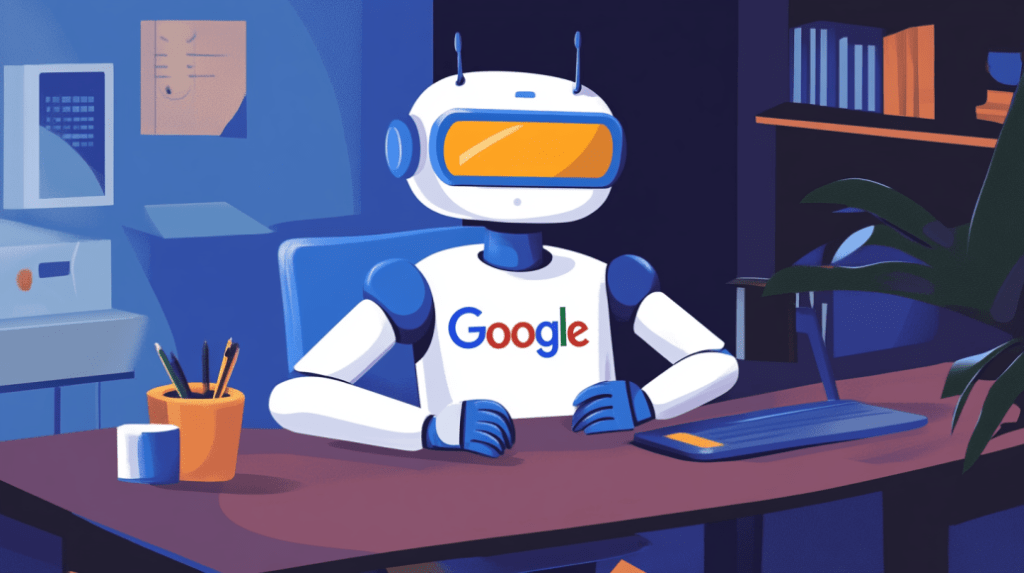Google releases free Gemini 2.0 Flash Thinking model, pressuring OpenAI’s premium strategy

Join our daily and weekly newsletters for the latest updates and exclusive content on industry-leading AI coverage. Learn More
Google has quietly released a major update to its popular artificial intelligence model, Gemini, which now explains its reasoning process, sets new performance records in mathematical and scientific tasks, and offers a free alternative to OpenAI’s premium services.
The new Gemini 2.0 Flash Thinking model, released Tuesday in the Google AI Studio under the experimental designation “Exp-01-21,” has achieved a 73.3% score on the American Invitational Mathematics Examination (AIME) and 74.2% on the GPQA Diamond science benchmark. These results show clear improvements over earlier AI models and demonstrate Google’s increasing strength in advanced reasoning.
“We’ve been pioneering these types of planning systems for over a decade, starting with programs like AlphaGo, and it is exciting to see the powerful combination of these ideas with the most capable foundation models,” wrote Demis Hassabis, CEO of Google DeepMind, in a post on X.com (formerly Twitter).
Our latest update to our Gemini 2.0 Flash Thinking model (available here: https://t.co/Rr9DvqbUdO) scores 73.3% on AIME (math) & 74.2% on GPQA Diamond (science) benchmarks. Thanks for all your feedback, this represents super fast progress from our first release just this past… pic.twitter.com/cM1gNwBoTO
— Demis Hassabis (@demishassabis) January 21, 2025
Gemini 2.0 Flash Thinking breaks records with million-token processing
The model’s most striking feature is its ability to process up to one million tokens of text — five times more than OpenAI’s o1 Pro model — while maintaining faster response times. This expanded context window allows the model to analyze multiple research papers or extensive datasets simultaneously, a capability that could transform how researchers and analysts work with large volumes of information.
“As a first experiment, I took various religious and philosophical texts and asked Gemini 2.0 Flash Thinking to weave them together, extracting novel and unique insights,” Dan Mac, an AI researcher who tested the model, said in a post on X.com. “It processed 970,000 tokens in total. The output is pretty incredible.”
The release comes at a critical moment in the AI industry’s evolution. OpenAI recently announced its o3 model, which achieved an 87.7% score on the GPQA Diamond benchmark. However, Google’s decision to offer its model free during beta testing (with usage limits) could attract developers and enterprises seeking alternatives to OpenAI’s $200 monthly subscription.
Google offers free Gemini 2.0 Flash Thinking with built-in code execution
Jeff Dean, Chief Scientist at Google DeepMind, emphasized improvements in the model’s reliability: “We’re continuing to iterate, with higher reliability and reduced contradictions between the model’s thoughts and final answers,” he wrote.
The model also includes native code execution capabilities, allowing developers to run and test code directly within the system. This feature, combined with improved contradiction safeguards, positions Gemini 2.0 Flash Thinking as a serious contender for both research and commercial applications.
Industry analysts note that Google’s focus on explaining its reasoning process could help address growing concerns about AI transparency and reliability. Unlike traditional “black box” models, Gemini 2.0 Flash Thinking shows its work, making it easier for users to understand and verify its conclusions.
We’re continuing to iterate, with higher reliability and reduced contradictions between the model’s thoughts and final answers.
Check it out as gemini-2.0-flash-thinking-exp-01-21 at https://t.co/sw0jY6k74m
— Jeff Dean (@JeffDean) January 21, 2025
AI transparency becomes the new battleground as Google challenges OpenAI
The model has already claimed the top spot on the Chatbot Arena leaderboard, a prominent benchmark for AI performance, leading in categories including hard prompts, coding, and creative writing.
However, questions remain about the model’s real-world performance and limitations. While benchmark scores provide valuable metrics, they don’t always translate directly to practical applications. Google’s challenge will be convincing enterprise customers that its free offering can match or exceed the capabilities of premium alternatives.
As the AI arms race intensifies, Google’s latest release suggests a shift in strategy: combining advanced capabilities with accessibility. Whether this approach will help close the gap with OpenAI remains to be seen, but it certainly gives technical decision makers a compelling reason to reconsider their AI partnerships.
For now, one thing is clear: the era of AI that can show its work has arrived, and it’s available to anyone with a Google account.



